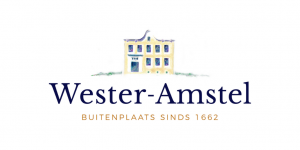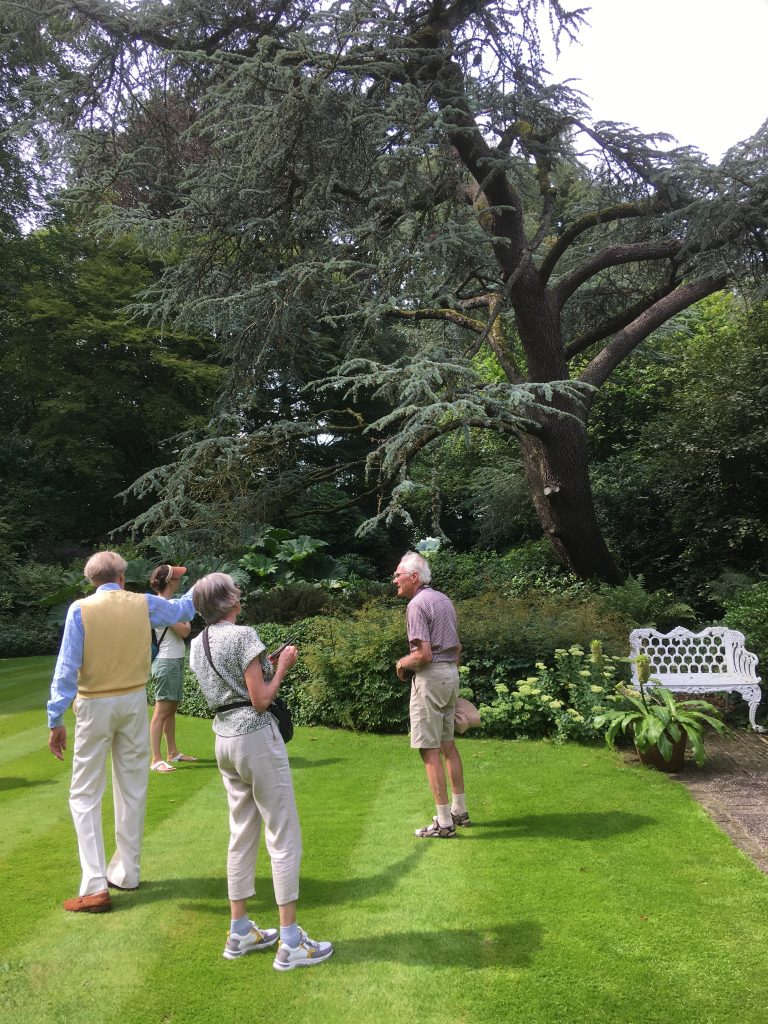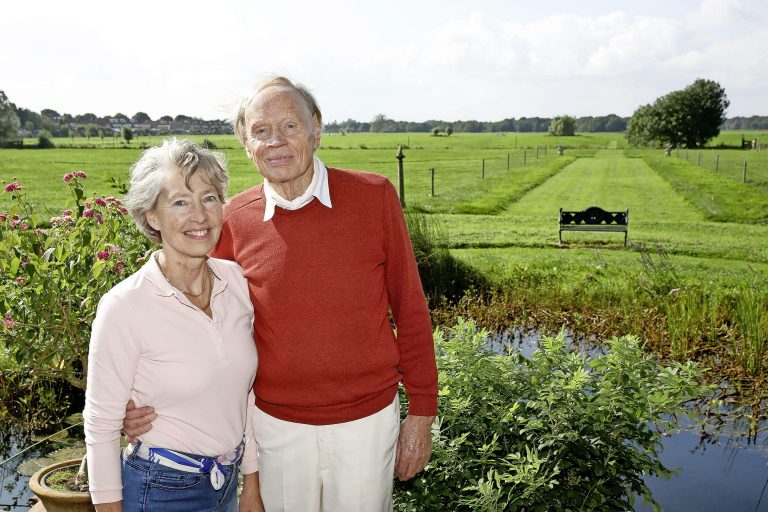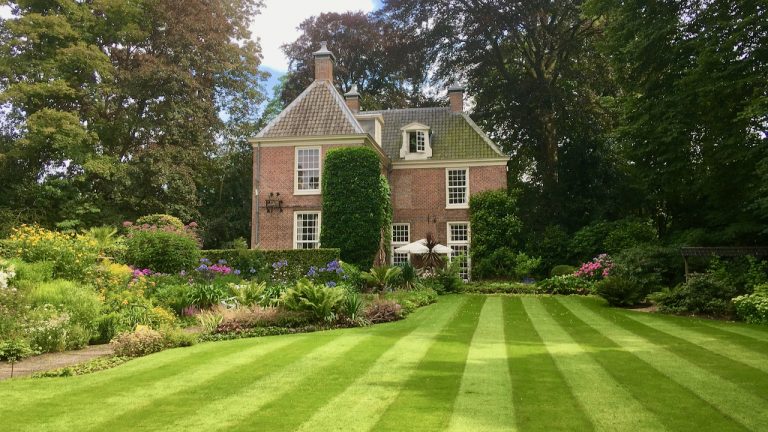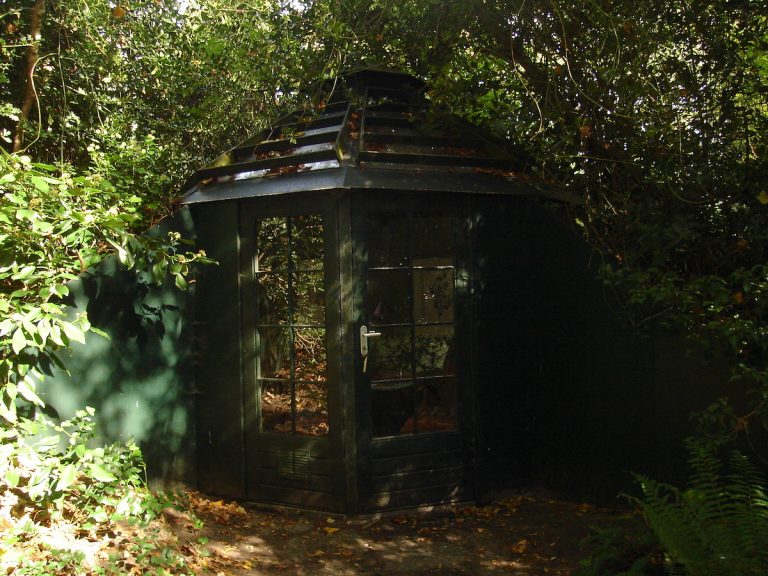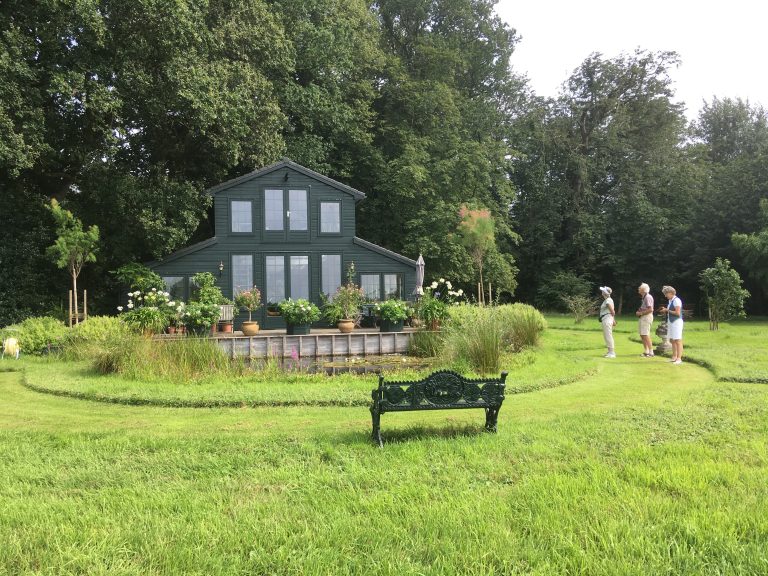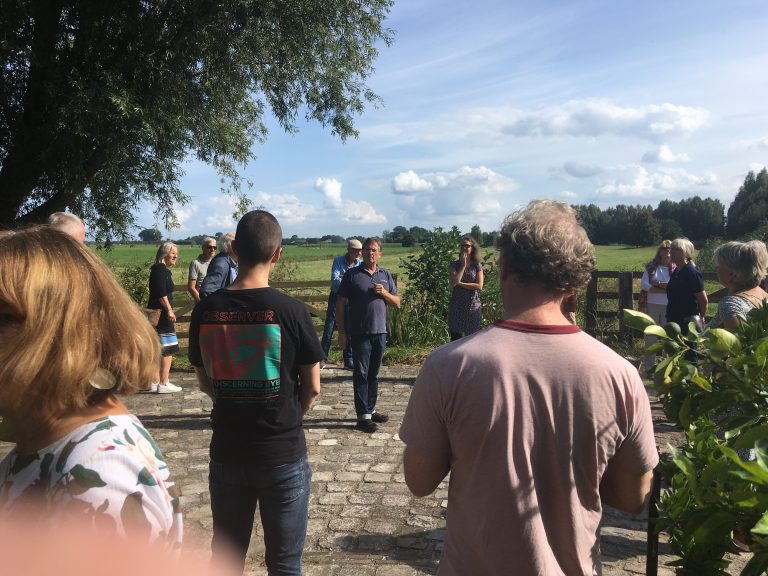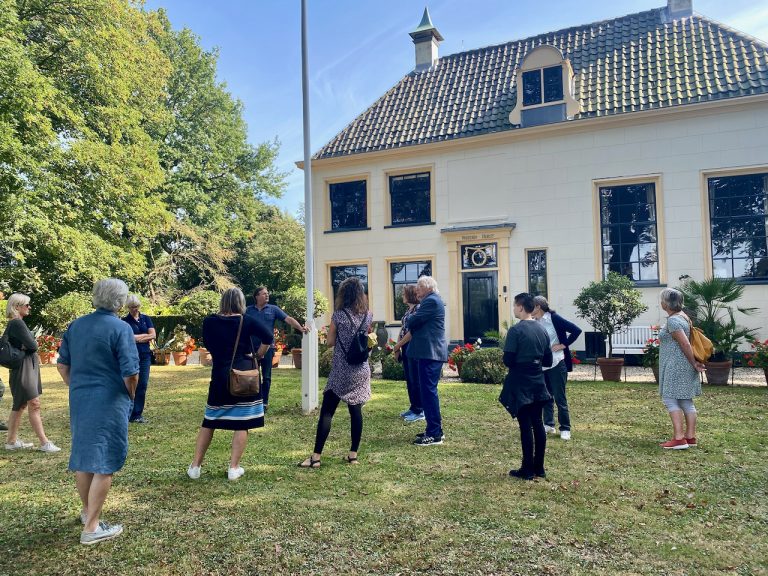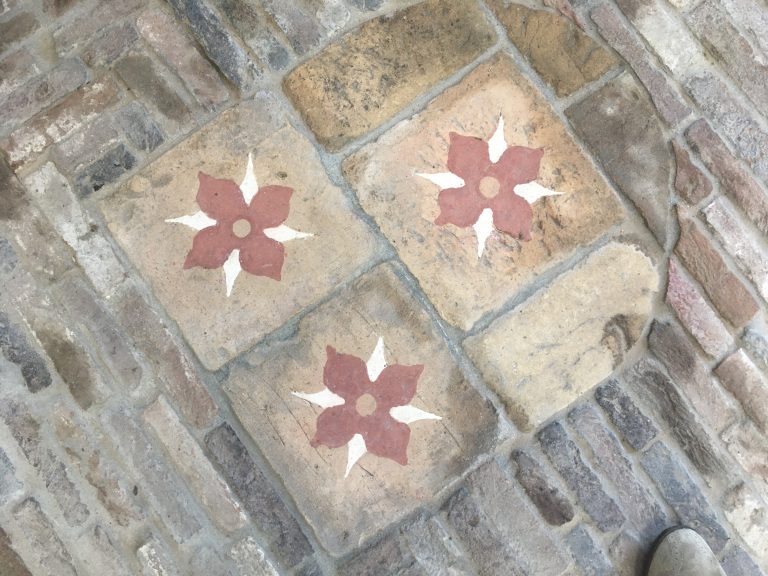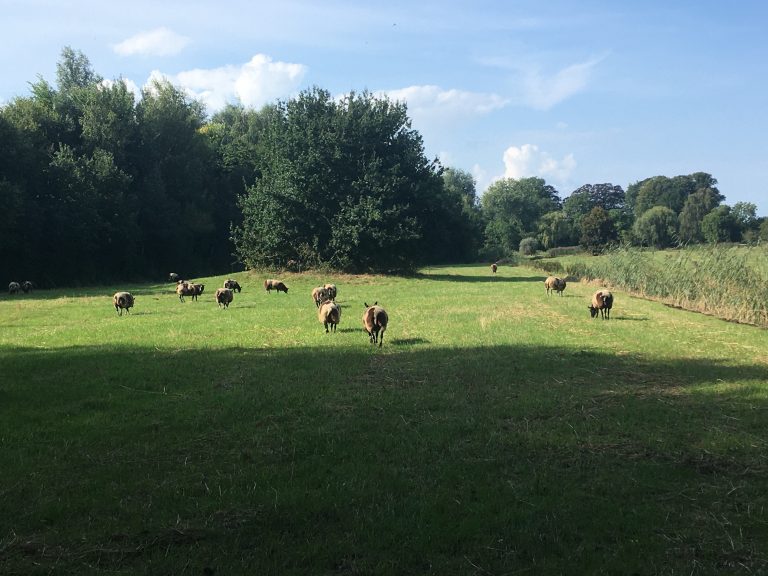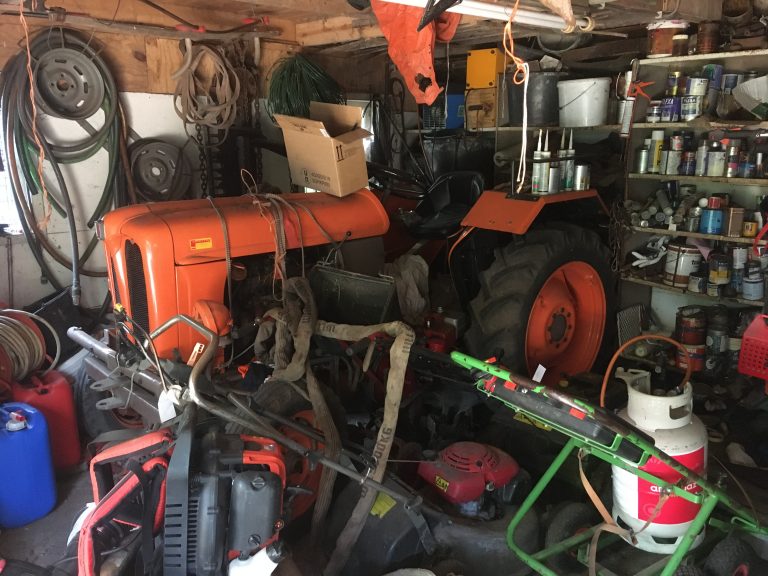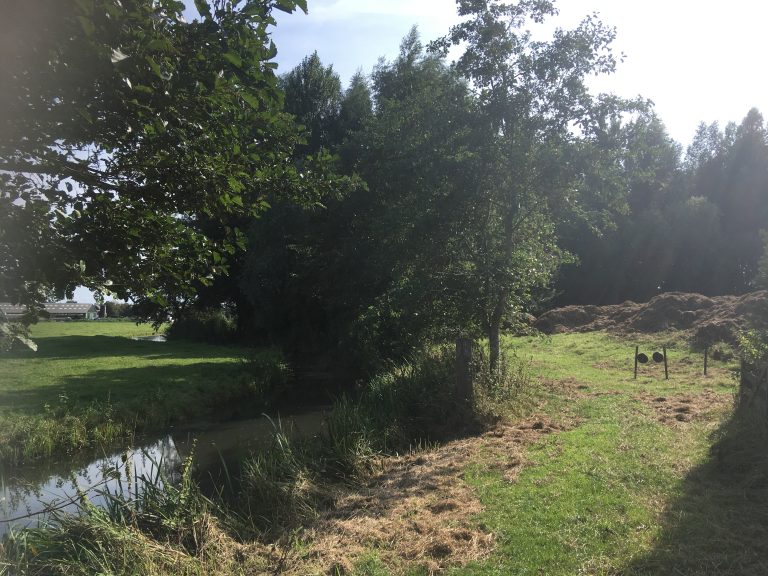Last year’s missed volunteer outing was made up for in a big way this year.
We were told in advance that the owners of the two estates we were going to visit couldn’t be more different from one another. And while this was certainly true, in the end, both outings complemented each other splendidly.
"Caroline lets me enjoy her garden every day." - Erik Greve
Erik and Caroline Greve's tour of their Berg and Vaart country estate was announced as a three-hour excursion for botanical connoisseurs. And while it was, perhaps, a bit highbrow for a garden philistine such as myself; I was permitted to join, so that I could write a report on our first volunteer outing since this pandemic began.
Not long after arriving, we are transported back in time with a carefully orchestrated presentation by our hosts. Where Erik is quick to point out the relationships and contradictions of form, Caroline proves to be the executive, filling in questions about plants and trees with latin names, their growth and maintenance. Where does her knowledge come from? From filling her days in the garden: "Enjoying things from the bench… I don’t get to do that.”
After a moment of reflection in the arabesque boxwood front yard, which attempts to parlay the strict golden cuts of the house, Erik leads us through one of the many shortcuts on the property. We end up at the back of the L-shaped building, where a sunlit panorama by landscape architect Mies Ruys unfolds. Erik immerses us in the selfless love of the blue-flaming Agapanthus, while Caroline demonstrates how she keeps the high-flowering plants under her thumb with nets.
We scatter throughout the garden, but a nervous feeling settles over us... as if we might disappear at any moment "down the rabbit hole" of this Wonderland. Luckily, Erik is able to call us back to him with a consistent, "youngsters!” Our hosts, on the other hand, communicate with one another, regardless of distance, with what can only be described as emu-like bird cries.
A huge cedar keeps an eye on me throughout the tour; after each side trip to The Orangery or The Rose Garden it reappears in my peripheral field of vision like a lighthouse in the dead of night: a reassuring feeling washes over me.
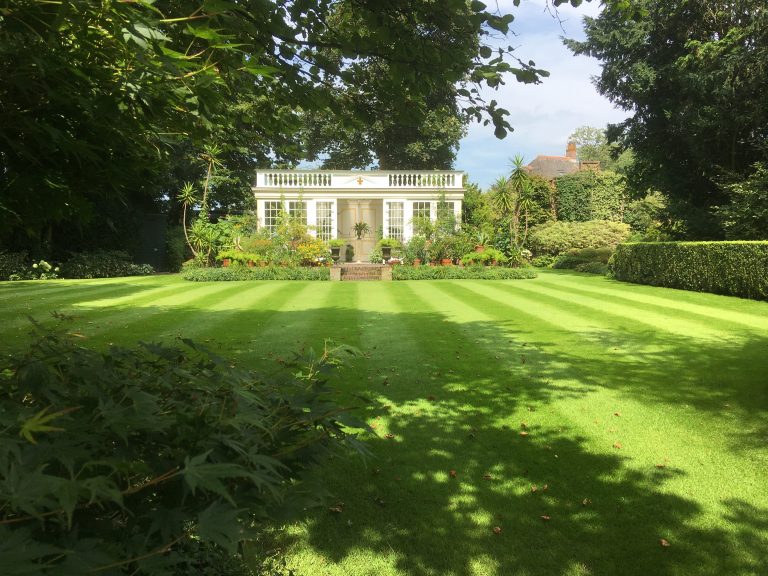
While wandering around, I am most surprised by The Wall. Where Erik still visualises classical nudes, Caroline has planted a climber in each of the niches. Erik, being the prepared host that he is, keeps the names of these plants on a cheat sheet at all times.
We are suddenly split into two groups of six. I follow Erik through the Bamboo Walk, across a Japanese bridge to The Island, where a meditation dome with a glass roof and ikat-covered deck chairs sits.
At last we go to the Palm House, for which I have long awaited. It overlooks a medieval meadow landscape, void of apartments and high voltage wires. It’s a place where an enthusiastic golfer would disappear in no time. Caroline pulls us back to reality by noting that those “cute” storks really are pests after all: "They eat everything, even bunnies."
Tea and cake among the huge potted plants, while an emotional Erik plays another vocal recording of his daughter in Notre Dame. Then after words of thanks, we leave this broad palette of impressions behind us. I go home as an innately satisfied "vegetable", holding a cutting of the Common Begonia in my hands; a plant I have always looked down on before.
"The more varieties the finer the apple juice." - Kees Beelaerts van Blokland
Our second volunteer outing, which unites the garden and park groups for the first time in two years, couldn't be more different from our previous excursion to the outdoor resort - Berg and Vaart. And that has everything to do with the owners. Whereas Erik Greve, meditating on symbolism, guides his guests through his beautiful country estate and gladly leaves the daily management up to Caroline, Kees Beelaerts van Blokland, owner of country estate Vreedenhorst, has both feet firmly planted in the soil of the Vecht.
I hold Kees up in front of the tumbler to ask him who is going to do the tour. It’s a simple answer, “Me.” He quickly pops out to change his clothes, so he’s ready for his role as tour guide. If one were to spend 15 minutes with him in front of the main house, like we did, you would understand why you rarely see him in a three-piece suit, because he does everything himself… And I do mean literally everything.
Kees ("With a K, because those are the real ones!) built the Orangery that we’re currently relaxing in out of an old bar, splits giant beech trees in his front yard, makes apple juice from dozens of different varieties (“then they don't have to be sweetened), swaps sheep flocks with the neighbour, turns ditches into streams, collects grafts nationwide for his citrus collection, leases a fox shooting license to hunters, plants a forest strip (now 20 years old and about 15 feet high) against the horizon, and bakes tiles with his family crest, the Medlar, on them. (I wasn’t joking when I said he does literally everything himself.) Regarding his family crest, Kees noted: "It doesn't stand for 'rot', but for two kinds of love. The first bloom is like puppy love, then in the years to come, it becomes a wreath with red leaves. This represents the love you have for your children."
He explains his recent purchase of more land with the philosophy that a country estate should breathe. If one family falls on hard times, the neighbours take over some land; that way strangers don't get in the way. It’s the natural course of things.
As is the case with all tours, this one eventually had to come to an end. Luckily we had an extensive snack table with beer, wine, and (of course) Kees’ De Appelsap waiting for us in the Orangery. While snacking and sipping, we listen to the latest Wester-Amstel report. And it turns out that despite the threat of the pandemic, Wester-Amstel has withstood COVID-19 surprisingly well! And that too is the natural course of things.
By: Ruud Vrielink
